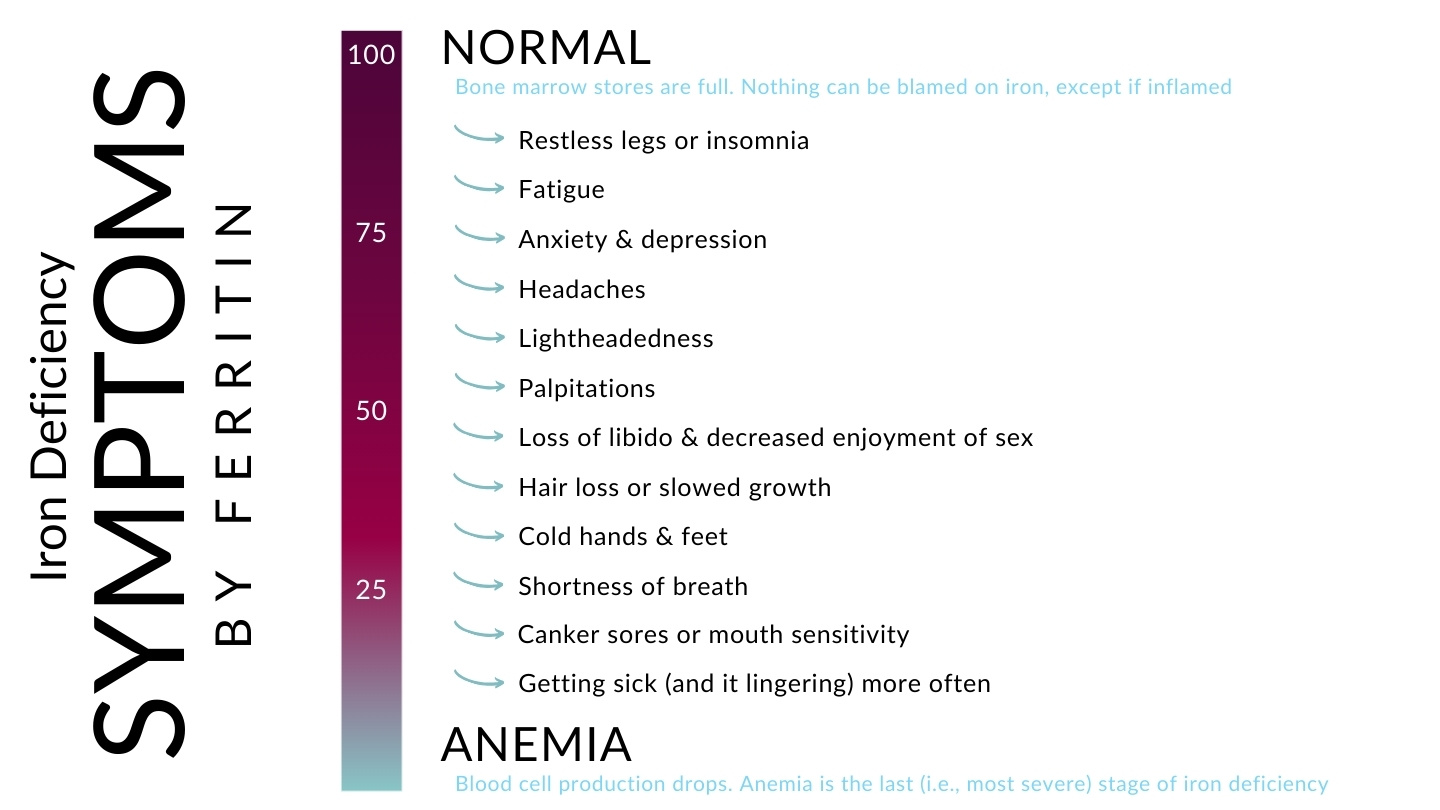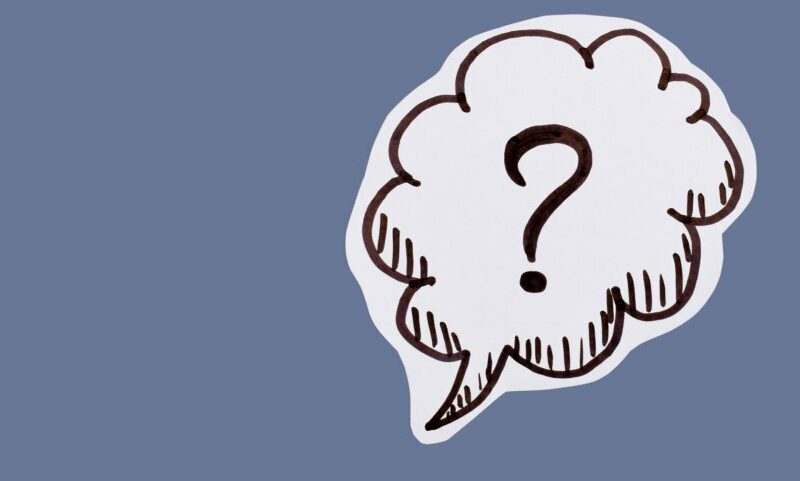
Iron deficiency symptoms (the ferritin gradient)
Symptoms of iron deficiency are obvious, once you know what they are…
- Fatigue
- Restless Leg Syndrome (RLS)
- Insomnia
- Afternoon napping
- Depression or anxiety
- Canker sores or mouth sensitivity
- Headaches
- Lightheadedness
- Palpitations
- Dizziness
- Getting sick more easily than most
- Pale skin
- Low libido
- Cold hands & feet
- Hair loss
- Pale conjunctiva (under-eyelids)
- Weakness or shortness of breath
And they don’t just suddenly happen all at once or when the lab result is bolded.
Rather, they pile up gradually, until you get all the way down to anemia, the last (most severe) stage of iron deficiency.
More like...

So what should my ferritin be?

Notice how there’s a “no person’s land” between 30 and 100?
…with a ferritin of 29 being “probable iron deficiency”
…but then a 31 suddenly is “unlikely”?
…and then anything less than 100 is abnormal?
Welp, there's a chasm
So we have two apparent facts:
- Ferritin above 30 is deficient.
- But a ferritin below 100 is abnormal.
Pick a side
Would you rather be on the “normal” side or on the “maybe sorta okay depending, we dunno” one?
We say, err on “normal”.
Your body (and disappearing symptoms) will thank you.
‘Cause then, once your ferritin is above 100, whether by oral or IV therapy, you know for a fact that any symptoms remaining are definitely, 100% NOT iron deficiency related.
What if my doctor disagrees?
There’s one way to change a good doctor’s mind: with evidence.
Send them this, our evidence-based, common love language.
And get yourself to a ferritin of >100
Ideally by IV, to get yourself feeling better again the fastest.










